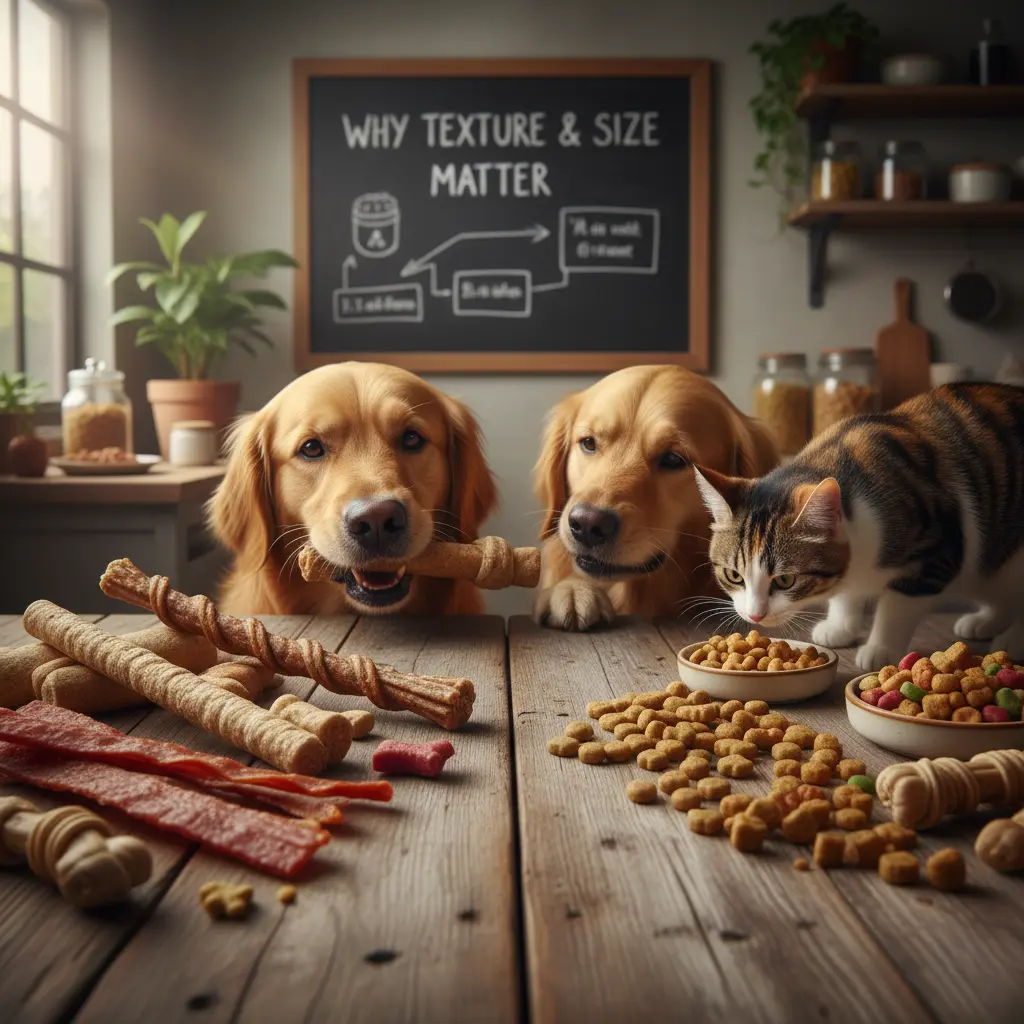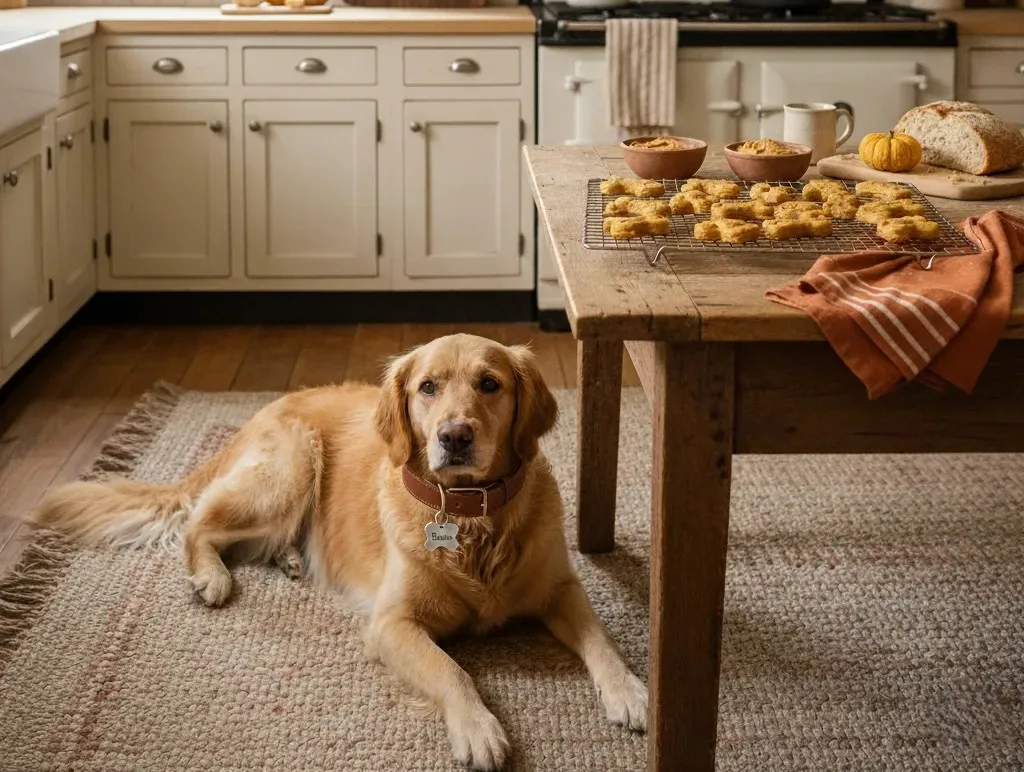Pet snacks are more than just tasty rewards—they’re an essential part of your furry friend’s daily life. From training and bonding to promoting good health, the right snack can make a big difference. But did you know that the texture and size of pet treats play a crucial role in their effectiveness and safety? The shape, chewiness, and size of a treat can impact your pet’s digestion, dental health, and even their enjoyment.
Understanding why these factors matter helps you make better choices for your dog or cat, ensuring every bite contributes to both happiness and well-being.
The Science Behind Pet Snack Design
The design of pet snacks isn’t random—it’s backed by nutritional science and animal behavior studies. Manufacturers carefully craft treats with specific textures and sizes based on the needs of different breeds, ages, and dietary requirements.
For example, crunchy biscuits help scrape away plaque from your dog’s teeth, while soft chews are perfect for older pets or those with sensitive gums. Likewise, a tiny kitten treat won’t satisfy a large dog, and an oversized chew could be dangerous for a small pet. The perfect snack should match your pet’s mouth size, chewing ability, and health goals.
Texture: The Secret Ingredient to Healthy Snacking
Crunchy Treats for Dental Health
Crunchy snacks aren’t just fun to eat—they serve a purpose. The firm texture helps reduce tartar and plaque buildup, promoting better oral hygiene. As pets bite into these treats, the abrasive surface gently cleans their teeth. This makes crunchy biscuits, sticks, and bones ideal for maintaining dental health, especially in dogs that are prone to bad breath or gum problems.
Dental chews have become a trending category in pet care, with many designed to be both tasty and functional. Look for treats labeled “dental formula” or those approved by veterinary dental associations for the best results.
Soft Treats for Sensitive Mouths
Soft, chewy treats are a favorite among puppies, senior pets, and those with dental issues. These snacks are easier to chew and digest while still offering great flavor. Soft treats are also commonly used as training rewards because pets can eat them quickly without distraction.
Many soft snacks now feature added nutrients like omega-3 fatty acids for a healthy coat or probiotics for digestion. They’re also perfect for pets recovering from oral surgery or dental cleanings.
Jerky and Meaty Textures for High-Value Rewards
When it comes to motivating your pet, meaty treats are unbeatable. The chewy texture of jerky or dehydrated meat satisfies natural instincts and encourages slow chewing. This not only keeps pets engaged but also prevents gulping, which can lead to choking.
Jerky treats made from real chicken, beef, or fish are among the most popular snack types because they combine protein with great taste—ideal for active dogs or cats with high energy needs.
Size Matters: Matching the Treat to the Pet
The Danger of Oversized Treats
A common mistake many pet owners make is giving treats that are too large. Oversized snacks can be hard to chew, pose choking hazards, or contribute to overeating. Small dogs, cats, and toy breeds are especially at risk because their mouths and throats are smaller.
It’s essential to choose treats that are proportionate to your pet’s size. For small breeds, pick mini treats or breakable snacks that can be portioned easily. Always supervise your pet while they eat to ensure they chew thoroughly.
Tiny Treats for Training Success
When training your pet, treat size becomes even more critical. Training requires repetition, so you’ll be giving multiple treats in a short time. Small, bite-sized snacks work best—they’re quick to eat, low in calories, and keep your pet focused on the task.
Training treats should be soft, aromatic, and easy to swallow. Many trainers recommend pea-sized rewards for dogs and smaller crumbly bits for cats. This allows you to reinforce behavior frequently without exceeding daily calorie limits.
Bigger Chews for Longer Engagement
If your goal is to keep your dog occupied, larger chews or bones are perfect. Long-lasting chews satisfy a dog’s natural urge to gnaw and can prevent destructive chewing behavior. These chews also promote mental stimulation, keeping pets entertained for hours.
Just make sure the chew is size-appropriate and digestible. Avoid cooked bones or overly hard chews that might splinter or damage teeth.
Texture and Size by Pet Type
For Dogs
Dogs come in all shapes and sizes, so snack variety is key.
- Small Breeds: Opt for mini biscuits or soft treats that are easy to chew.
- Medium Breeds: Moderate-sized crunchy treats support dental health.
- Large Breeds: Bigger bones, jerky strips, or hard chews keep them busy and satisfied.
Dogs also love texture variety, so rotating between soft and crunchy snacks can keep them interested and engaged.
For Cats
Cats are pickier eaters, but texture is equally important for them. Most felines prefer crunchy outer coatings with soft centers, mimicking the texture of real prey. This satisfies their natural hunting instincts.
Cats also benefit from smaller, bite-sized snacks that support dental cleaning and hairball control. Avoid sticky or overly hard treats that could damage teeth or cause choking.
The Role of Texture in Digestion
Texture doesn’t just affect taste—it influences how well your pet digests food. Crunchy treats promote chewing, which mixes food with saliva and aids digestion. Soft treats, while easier to eat, may be swallowed whole, which can sometimes lead to indigestion if given in excess.
For pets with sensitive stomachs, grain-free or single-protein snacks with gentle textures are best. Always introduce new treats gradually to monitor for allergies or digestive upset.
Safety Tips for Snack Size and Texture
- Always supervise snack time, especially with new treats or chews.
- Read labels carefully to ensure the treat is appropriate for your pet’s breed and age.
- Break large treats into smaller pieces for portion control.
- Avoid excessively hard chews, such as cooked bones or antlers, which can cause tooth fractures.
- Provide fresh water to help your pet swallow and digest snacks comfortably.
Choosing the Right Snack for Your Pet’s Needs
When selecting snacks, consider your pet’s age, size, chewing habits, and health goals. Puppies and kittens need softer textures, while adult pets may benefit from crunchier options for dental health. Senior pets often require smaller, gentler treats that are easier on the teeth and gums.
Opt for treats made from natural ingredients, with real meat or vegetables as the first ingredient. Avoid artificial colors, preservatives, and added sugars. Many pet parents are now choosing functional snacks—those fortified with vitamins, minerals, or supplements for joint, coat, and digestive health.
Final Thoughts: The Perfect Bite for a Happy Pet
At first glance, the texture and size of a pet snack may seem like minor details—but they make a world of difference. The right texture can clean teeth, improve digestion, and enhance enjoyment, while the right size ensures safety and proper nutrition.
So next time you pick out a treat, think beyond flavor. Whether it’s a crunchy biscuit, a chewy jerky strip, or a soft training bite, choose one that fits your pet’s mouth, age, and lifestyle. Because when every bite is just right, your pet doesn’t just get a snack—they get a moment of joy, health, and love.



